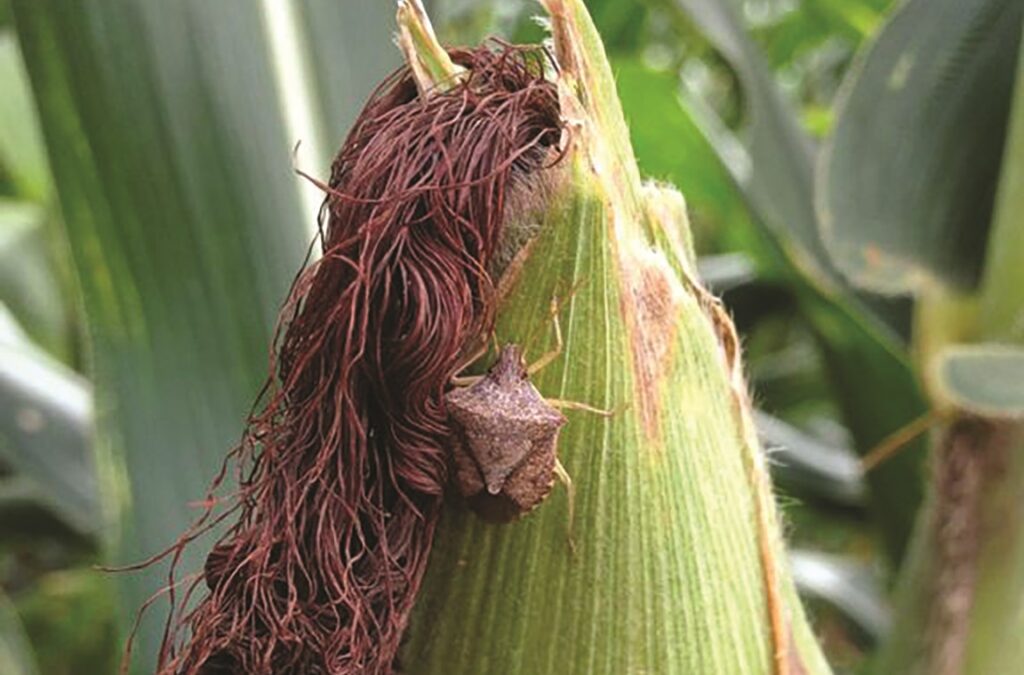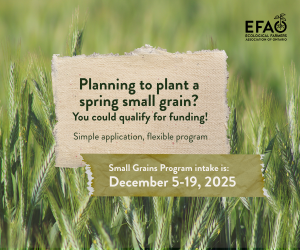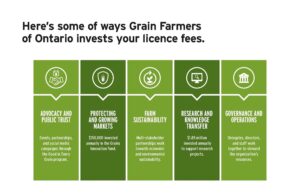Pest threats are changing
WHAT CAN BE DONE ABOUT IT?

CLIMATE CHANGE AND ITS IMPACTS ON FOOD PRODUCTION ARE OFTEN SPOKEN OF AS FUTURE EVENTS. For Tracey Baute, field crop etymologist with the Ontario Ministry of Agriculture, Food and Agribusiness, the effects of warmer winters, changes in precipitation patterns, more frequent extreme weather events, and other climactic trends are already visible in the behaviour and type of insect pests in Ontario.
During the 2024 Ontario Agriculture Conference (OAgC) and in a follow-up interview, Baute discussed what farmers across Ontario and elsewhere in North America might encounter when trying to control insect pests in the coming decades. Several key species were highlighted alongside different scenarios in long-term weather pattern shifts.
Baute says not all insects will thrive in all regions, whether pest or beneficial. However, as pressures change and new ones emerge, the need for effective integrated pest management will be ever greater.
CLIMATE — WHAT TO EXPECT
Early in her OAgC presentation, Baute stressed the effect of climate change will not be uniform. Different parts of the world, including Canada, are likely to experience the phenomenon differently, such as more or less precipitation or greater or lesser temperature extremes. Other impacts, including smoke from wildfires and an overall increase in atmospheric carbon dioxide, will also affect flora and fauna.
Warmer winters, for example, might bring opportunities via longer growing seasons for Canadian crop producers — but the season’s shift could also better align some crop’s most vulnerable growing periods with insect pest pressure. Conversely, it might mean crops are less vulnerable to some current high- profile pests. Either way, says Baute, control regimens will have to adapt.
She also emphasizes that pest populations that find it difficult to adapt to different climactic conditions might initially sound like a good thing. However, this could impact other species in the ecological chain (beneficial predator species, microbes, etc.), which could hurt crops in unanticipated ways.
PEST EXAMPLES
Western bean cutworm offers a current example of a pest which, thanks to seemingly small changes in climactic conditions, successfully made its way to Ontario after a century of stasis in the American Midwest. A variety of other species and what might happen to them were identified. Examples include:
BEAN LEAF BEETLE: A pest in soybeans, this bean leaf beetle has a greater temperature range than its preferred plant victim. Currently limited to Southern Ontario, hotter temperatures in the now soybean-heavy Midwest and Mississippi Delta could result in a northern shift in soybean production, bringing the pest to Quebec, Manitoba, and parts of the Maritimes.
BROWN STINK BUG: This stink bug currently does not enter field crops during the most susceptible stage. Warmer temperatures will shift this. Ontario and Quebec are likely to become much more suitable to the pest, while parts of the United States will become less so. Baute says that high-value crops like fruits, corn, and soybeans are at risk. She adds that brown stink bugs are “something we are going to have to scout for much sooner.”
CORN EAR WORM: 40 years of winter soil temperature data show corn ear worm will, if warming trends continue, face more ideal conditions in the Great Lakes region. This means that populations will be able to successfully overwinter in places like Ontario instead of travelling to the area after emerging in other parts of North America. Baute says this particular pest is a notable one to watch, as it gets exposed to a lot of chemical controls. More resistance issues may result.
FALL ARMY WORM: The migratory path of fall army worm appears to be changing, meaning its end location and timing of arrival change too. This subtropical pest already does well in Ontario, says Baute, but is increasingly arriving earlier (on Texas storm fronts) and staying later into the growing season.
WINTER CUTWORM: Currently less common, winter cutworm loves winter. Indeed, Baute says it can “actually crawl on snow.” Though not a species being actively monitored in Ontario, Baute says, “the problem with this pest is we tend to walk away; we’re done scouting by November, but that’s when they’re doing the most damage.” With more days during which winter cutworm can thrive late in the season, the challenge of controlling them with chemicals on unfavourable terrain and in cool temperatures is concerning.
SWEDE MIDGE: What happens in the case of Swede midge is a toss-up, with its range and population being dependent on moisture. It may expand well into Quebec, the Maritimes, and more parts of Western Canada with more moisture.
ADDITIONAL CONSIDERATIONS
If climactic changes affect insect pests, they also affect beneficial species, pollinators, and crop growth.
For example, Baute says plants like soybeans will grow more quickly with higher atmospheric carbon dioxide. In the process, those soybeans become less nutritious to pest species, meaning those pest species will eat more. Soybeans will also become more susceptible to damage and pathogens as higher carbon dioxide levels suppress Jasmonic acid — one of the crop’s natural protections.
Warmer winters could mean alfalfa weevil might outpace beneficial insects which parasitize it, rendering a key biological control less effective.
Elevated growing season temperatures mean corn borer is less discriminate in its reproductive cycle, making it harder to track different races.
Finding adequate spray windows may become more challenging as severe precipitation or heat events increase. Additionally, hotter temperatures mean insect metabolisms will run higher, potentially making some species less susceptible to current controls.
THE PATH FORWARD
No silver bullet exists for insect pest management. For Baute, the solution to any significant change in Ontario’s pest pressures lies in more resilient integrated pest management strategies, with diversity playing a critical role.
She says that better and more diverse crop genetics and control products will help. Cover cropping and companion cropping, too, have been shown to support beneficial insect species effectively. In wheat, for example, a meta-analysis of 50 field studies showed wheat intercropped with one species of legume, brassica, or cotton generally decreased pests. Habitats along
field edges do something similar, providing natural corridors, shelters, and floral resources for pollinators and the enemies of insect pests.
“All the studies show the more diversity we apply to the landscape, the better off we are,” says Baute.
“Anything we can do to benefit natural enemies [of pests], but also reduce greenhouse gasses, drought scenarios, making resilience in the soil and reducing erosion will benefit us greatly in providing that natural enemy habitat and make us a lot less prone to the pest itself…But we are also going to see maybe modifying our planting or harvesting dates, maybe planting varieties that are more genetically resistant. Even trap cropping … and implementing some biocontrol tools and biopesticides.” •


























